Dominic Michaelis. MA Cantab, MSc Cornell, RIBA
In the early 1950s, Commander Philippe Tailliez, of the French Navy, a close collaborator of Commander Jacques Cousteau, presented a concept for a "Floating Island", or " Ile Flottante "
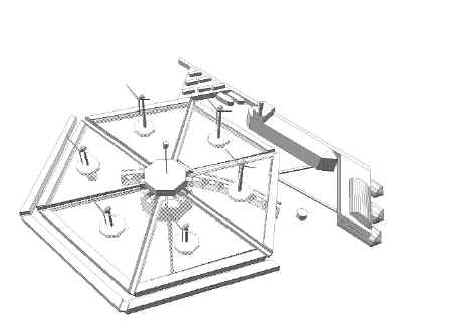
OTEC power stations suggest the creation of such islands, mainly for power generation, but possibly also for many other complementary applications, whence the concept of the Energy Island.
One of the main problems encountered by most OTEC projects is the relatively low temperature differential between the deeper waters at 5¢XC and the tropical surface waters at around 25¢XC, limiting the thermodynamic efficiency of the conversion plant.
The Energy Island concept is to bring together on a single floating structure a variety of renewable energy conversion systems to maximise the energy production available from the diverse sources available, so that the interrelated systems can assist each other to reach greater efficiencies of conversion.
The Energy Island is designed principally for tropical waters, but variants for higher latitudes can also be considered.

Figure1. ( US NREL Laboratory) shows the sea surfaces where OTEC can be
implemented, extending to most of the densely populated areas of the planet.
The basic island could be of hexagonal plan, so that it could readily be joined to other units to form cluster or linear plans as required. A hexagon made up of 6 equilateral triangles of 300 meter long sides would have a longest cross distance of 600 meters and a shortest cross distance of 520 meters. It's area would be 234 000 m(2), or 23,4 hectares. It's size would guarantee it's stability in heavy seas.

Figure 2.Energy Island Annotated Plan
The Energy Island would act as a platform to maximise collection and conversion of the diverse renewable energy sources available.
These would include :-
WIND ENERGY
Wind Energy varies from site to site, but is generally more plentiful at sea, without the interference of land features. In these conditions, to maximise wind energy collection, aerogenerators would be mounted on height adjustable hydraulic masts allowing collection at different heights where one mill would be in the lee of another. On a 600 meter wide platform, it is proposed to place 3 low level 70 meter diameter mills and 3 high level diameter mills, each capable of generating 3 MW (el).
The total peak output is 18 MW peak.
SEA CURRENT ENERGY
Sea current Energy is very site dependent, but it is assumed that a cowled turbine assembly 500 meters across perpendicular to a constant current flow can generate 2MW / 100 meters, or a total of 10 MW.
WAVE ENERGY
Although in tropical waters, the average wave energy profile is far from the 50 kW / meter average of the North Sea, a figure of 15 kW / meter can be expected. Since one of the problems of OTEC systems lies in the vast volumes of water that need to be shifted, wave energy could be used directly to induce these flows without going through the inefficiencies of electricity generation. With a 600 meter long front, a 9 MW resource is achieved, of which it is assumed that 2/3 can be transferred to usable hydraulic power, a 6 MW contribution.
SOLAR ENERGY
Many different solar collector systems can be considered over the 22 hectare platform, ranging from PV arrays to concentrating thermal systems. The hexagonal plan lends itself particularly well to "Power Tower" systems in tropical latitudes. The highest collection efficiencies, around 75%, are achieved by such high temperature "Power Tower" type concentrators, which, at 800¢XC, allow a secondary conversion ratio to electricity of 40%, an overall efficiency of 30%.
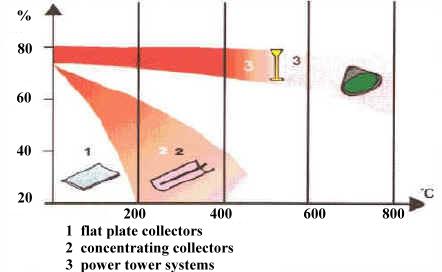
Figure3. Solar Energy conversion efficiency graphs.
The 0,9 kW / sq m radiation at sea level would produce, from 20 hectares, a thermal input to the focus of 135 MW and an electrical output of 54 MW (e) peak. In tropical waters, the cosine losses being low during the three hours around solar midday, it can be assumed that the Power Tower will operate at full regime during 6 hours a day, the losses being made up during the remaining hours. This would be equivalent to a 13,5 MW continuous output. But, the 81 MW (th) peak remaining can be used totally by the OTEC system to boost its efficiency, that is a contribution of 20,25 MW (thermal) continuous.
The high efficiency of collection at high temperatures could be of great benefit to OTEC systems, since by gradual dilution of high grade "waste" heat to low grade heat, the effective benefits could raise the OTEC temperature differential to increase Carnot efficiencies, a number of "cascade" generation subsystems being possibly introduced.
The total peak contribution from wind, wave, current and solar sources amount to a 47,5 MW electric, 6 MW hydraulic and 20,25 MW relatively high grade thermal energy, a total of 73,75 MW.
OTEC
Ocean Thermal Energy Conversion, (OTEC) has the greatest potential energy output, since the resource, solar heated surface sea water is virtually infinite, as is the cooling capacity of the cold layers of the greater sea depths. Boosted OTEC will be the greatest energy contributor to the Energy Island, using the other forms of energy created on the island to insure its regular output, boosting its thermal efficiency and assisting in its functions, thereby reducing its requirements normally taken from its own output.
Thermal input, either of waste heat, or possibly even of heat pumped thermal energy using the island generated electricity to raise the temperature of the surface resource could result in a shorter cold water pipe (CWP) which represents a great proportion of OTEC costs and energy use, allowing more site flexibility to the Energy Island itself. This consequent lower necessary depth would also result in simpler and cheaper mooring mechanisms. More work needs to be done on the CWP concept, for instance looking at a reversed heat pipe, whereby the saturated vapour would be circulated through the pipe to a low level condenser, the working fluid only being pumped to the surface.
An interesting parallel has been drawn by R Cohen from the US Dept of Energy :- " a simple comparison may lend some insight into the energy supply available from OTEC. A temperature difference is analoguous to a hydraulic head ; each degree centigrade corresponds to 427 m of head. Thus, a temperature difference of 21¢XC would correspond to having the water at a height of 8967 m if 100% conversion efficiency were attainable... Thus, a net 2,5% conversion efficiency would enable a height of 224 m to be attained... It is as if much of the world's ocean water were captured behind invisible "thermal dams"of significant heights."
Although it is difficult to assess the size of the OTEC plant which could be usefully assisted and complemented by the other "on board" energy sources, we will assume a total average output of 250 MW from the combined resources, with approximately 1/4 as "ancillary" sources assisting the OTEC generating plant, but acting on their own when the OTEC plant does not require their assistance, or where their intrinsic output is more efficient to the overall plant output. Lockheed developed a concept for a 265 MWe OTEC baseline power plant, illustrating that such power output is conceivable.
Clearly, because of the periodicity of energy production from the "ancillary" sources, energy storage will be crucial to the good functioning of the platform. A thermal energy store will be required, and could consist of a central reservoir at a temperature held below the boiling point of water.
A hydrolysis plant will also be required to produce hydrogen for electricity conversion, storage and re-injection by fuel cell technology as required. Electrically or hydraulically driven heat pumps could also be used to raise evaporator fluid temperatures.
A harbour is located on the leeward side of the island, for general use, but also for specialised hydrogen transport tankers. Hydrogen tanks are located underwater for safety measures. A residential area is located near the port but away from fuel storage facilities.
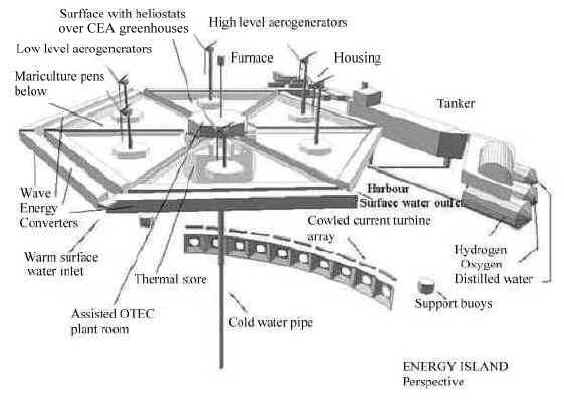
Figure4. Perspective view of Energy Island, Annotated.
The hexagonal plan allows six apex inlets to the OTEC plant heat exchangers, (the outlets being at a lower submerged level), when planned either as a separate unit, or when linked together as units along one of their sides. Prevailing currents play a very important role in OTEC systems, and sites will be sought where there is sufficient sea surface movement to ensure the availability of a continuous warm surface water supply.
Apart from Energy Production, the open cycle OTEC plant can be designed to produce considerable quantities of distilled water. A dual system is proposed with both open and closed cycles. Distilled water is a valuable resource that can be taken to the mainland, but can partly be used on the Energy Island. Soft water is needed for human needs, but also for instance, for washing away salt deposits from heliostats, and to supply soft water for hydroponic plant growth and evaporative cooling.
Because the Energy Islands will generally be located in tropical zones, the solar collectors create shade, which is essential in such latitudes for plant growth. The shaded areas can house evaporatively cooled greenhouses in which hydroponic plant growth can be carried out, using the high sky albedo for photosynthesis. 20 hectares of plant growth could be integrated into the Energy Island, to increase food or biomass production by the process of Controlled Environment Agriculture. (CEA).
Since this plant cover will let through varying amounts of light, the greenhouse can have a metal trellis floor allowing light penetration to the sea surface below which, even if compartmentalised by a transparent floating membrane, will so be able to harbour pens for fish or vegetal marine growth for food or biomass production.
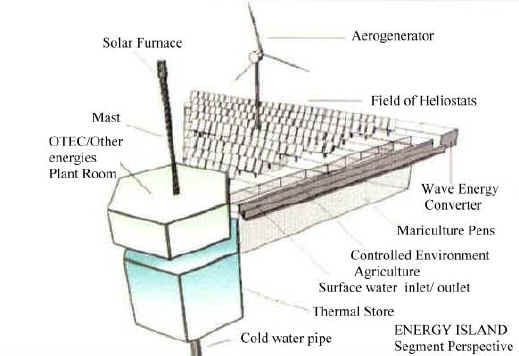
Figure5. 1/6 Segmental Section, Annotated
In storm conditions, the hydraulically operated heliostats are designed to lay flat and interlock, to form a waterproof and windproof skin over the CEA greenhouses, whilst seawater is prevented from flooding the floor surface by the transparent membrane acting against the trellised floor.
The Energy Island could also benefit from other marine forms of energy, the use, for instance, of geothermal marine resources, or the creation of "water chimneys" activated by underwater gas discharges or heat sources, driving immersed turbines. Because of the very high pressures at great depths, seawater can reach high temperatures without boiling, and pressurised power plants can be lowered over these hot spots, some at 300¢XC, the cold sink found from nearby waters piped to the immersed plant. In such a "geotec" application, only electric cables would join the power plant to the Energy Island above.
The Energy Island is therefore capable of creating electrical generation, hydrogen, oxygen, distilled water, plant growth and marine enhanced life
produce. It can also incorporate human habitation, with the possibility of sea borne dwellings, and related activities, forming a novel pattern of living. At a relatively low population density allowing for passive and photovoltaic housing design, of 50 people per hectare, ( Outer and inner London combined density of 45 people / hectare rather than Paris central of 200 people / hectare.), a 22 hectare platform could house 1000 inhabitants, using, at 2 kW per person, less than 1/100 th of the energy produced by one module of the Energy Island.
Because of the capacity of hexagonal linkages, a great variety of configurations can be created, depending on geographic, economic and geopolitical considerations. These include separate units, clusters of various widths, and linear developments. Taking a linear development of 4 units facing the prevailing wind, seas and currents, we can expect an electrical generation output of 1000 MW, the equivalent of a small nuclear plant. 8 units would generate 2000 MW,the output of a large nuclear plant.
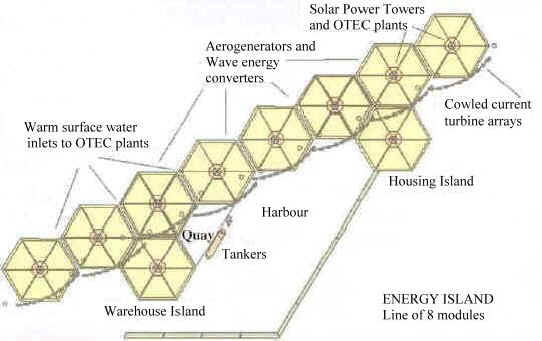
Figure6. Energy Island 2000MWe plant. Annotated.
Although some of this generated power will be used as electricity, a large proportion can be transformed into hydrogen fuel by electrolysis, with an efficiency ranging from 80 to 90%. Hydrogen is a clean fuel, combining with oxygen when "burnt", to give water or water vapour as its by-product, creating no atmospheric pollution, and therefore considered by many as the Fuel of the Future. ( see O' Bockris, and SHEC. Solar Hydrogen Energy Corporation. Canada.) Tom Beck, from SHEC, states that hydrogen can be used to produce electricity from fuel cells with an efficiency of 50 to 60%, three times better than an internal combustion engine generator, or twice as efficient as a turbine generator. It is thus the ideal fuel for transportation and decentralised power generation.
Although the energy pattern for the 21st century will be ideally decentralised, relying on smaller local renewable energy sources and strong energy conservation policies, thereby reducing the need for centralised monopolistic energy supply and distribution systems, it is nevertheless important to visualise how a new clean energy supply alternative could be provided to replace nuclear and fossil fuel supplies.
Nuclear plants can vary in size, but in the electricity generation field, they often come in 1000 MW to 2000 MW output sizes. The solar assisted OTEC ( SA-OTEC ) would require a linear array of 4 to 8 hexagonal modules to achieve the equivalent energy production levels, or in terms of length, 2 to 4 kilometers long arrays, probably taking up less space than the terrestrial nuclear equivalent, whose "visual" pollution is felt strongly within a radius of at least 10 kilometers or more, blighting large tracts of valuable land.
It is indeed a great advantage of SA-OTEC plants that they occupy no land, but add intensively used specialised platforms to the land mass, increasing the effective land area, and removing any visual pollution to off-shore sites where their effect would be insignificant, in the vast area of the seas, occupying more than 2/3 of the earth's surface.
In some conditions where erosion by the seas contributes to loss of land areas, arrays of Energy Islands can afford protection, and the energy provided could be in part used to pump eroded soil back onto land, and so provide barriers as necessary to fight erosion, but also to form earth dams to protect low lying lands from the predicted rising sea levels caused by global warming due to the greenhouse effect.
Looking at replacing nuclear energy by SA-OTEC, the world nuclear capacity, representing 7% of total world energy use, amounts to some 700 Mtoe ( million tons of oil equivalent.) or 8120 TWh / year, or the continuous output of 0,927 TW, or 927 GW or 927 x 1000 MW plants, or 3708 SA-OTEC basic Energy Island modules. Although in fact strung out in thin lines to maximise sea bound energy systems, it is interesting to note that these islands, that could obviously never be put together in one cluster, since they would not have access to the vast heated sea surface and sufficient coolant from the " deep ", together would occupy an area of 81576 hectares, or 815 square kilometers, less than a square of 30 by 30 kilometers.
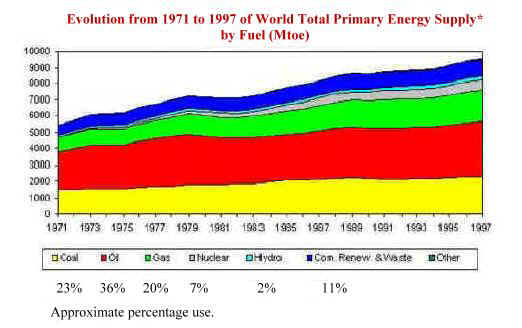
Figure7. World Total Primary Energy Supply ( Source US Dept of Energy.)
To produce the 10 000 Mtoe world total yearly ( Year 2000) consumption of energy, 13242 SA-OTEC Energy Islands would be required, strung out in the seas, with a combined area of 1 165 000 hectares, or 11650 square kilometers, or a hypothetical area only 108 kilometers by 108 kilometers, a pin point in the oceans. The total length required would be 6621 km, a thin line lost in the immensity of the seas.
The economics of the Energy Island can only be seen in the light of its multifaceted benefits. Obviously, first and foremost is the production of a 250 MW electricity generating plant using no external source of energy other than that supplied by the sun and the seas. Clean energy is invaluable, and needs to be assessed taking into consideration not only its value of supplied energy, but also its freedom from pollution, whether radioactive or atmospheric, contributing significantly to lower overall energy unit costs, and to world requirements for clean energy production. Its economics also need to take account of additional land gained, as well as of its harvests of Controlled Environment Agriculture ( CEA ) and of marine life foods. They also need to take into account benefits of the coastal protection provided.
Finally, but again invaluable, is the capacity of these production units to provide energetic independence to those countries installing them either close to their own shores, or in offshore concessions linked to distant lands by superconducting electrical cables and by hydrogen pipelines or tanker shipping routes.
World Primary Energy Supply has doubled from 1972 to 2002, that is, in thirty years only, and is growing exponentially. In view of this alarming figure, all renewable energy sources need to be considered.
There is no single answer to the Energy Crisis. However, for a safe future, it is essential to initiate the gradual closure of all nuclear generation plants to replace them initially with more efficiently used fossil fuels, eventually replacing these with renewable clean energy sources. In this perspective, decentralised solar power generation, whether photo-electrical, photo-thermal, or photo-chemical and biological, combined with global energy conservation, will play important roles in future energy scenarios.
The Energy Island is an integral part of a new policy realignment towards clean energy production and distribution, essential to the pollution free world which represents to many a major challenge to mankind in the 21 st century.
To others, a pollution free world is the only way to rediscover the essential qualities of life on "planet earth".
